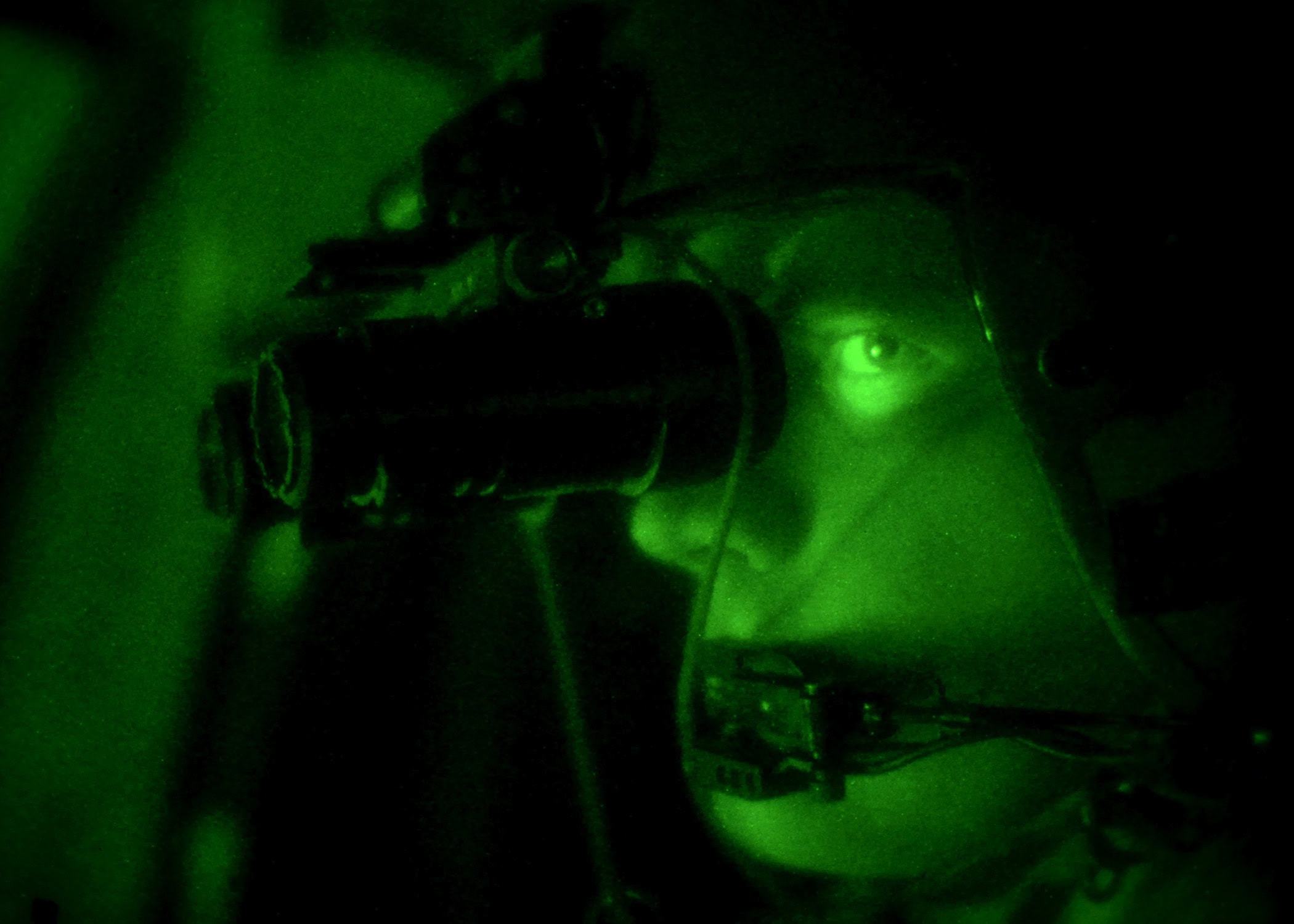
[Image above] A solider uses the AN/AVS-6 Aviator’s Night Vision Imaging System, a helmet-mounted, direct-view image-intensification device that allows flight operations under very low (starlight) ambient light conditions. Credit: Program Executive Office Soldier; Flickr CC BY 2.0
The buzz continues regarding the potential use of graphene in commercially available electronics. Graphene’s single-layer thickness, toughness, and supreme mechanical and thermal properties make it an ideal choice for developing electronic, optoelectronic, and electromechanical devices and sensors.
And the time-to-market gap for commercially viable graphene in electronic applications just keeps shrinking, with promising new approaches in development that aim to manufacture graphene to create faster, more efficient electronics at scale.
This summer, we covered new research from scientists at National Cheng Kung University in Taiwan who developed a simple, cost-effective approach to produce graphene in a way that they say broadens the material’s potential commercial applications that they call ‘defective’ graphene.
But the latest breakthrough for commercially viable graphene comes from researchers Tomás Palacios and Pablo Jarillo-Herrero from Masscahusetts Institute of Technology. Palacios, Jarillo-Herrero, and colleagues are working to develop “a flexible, transparent, and low-cost infrared vision system” featuring graphene, according to an American Chemical Society news release.
[Palacios sound familiar? We reported on his startup Cambridge Electronics Inc. earlier this year.]
Infrared technology isn’t new—it’s long been used in the military and has helped police and firefighters improve nighttime vision when the job depends on it. But current infrared vision systems need “cryogenic cooling to filter out background radiation, or ‘noise,’ and create a reliable image,” the release explains. This adds inefficient bulk to these tools and makes them more expensive to produce.

A thermal sensor made out of graphene could lead to better night vision technology. Credit: American Chemical Society
Driven by the mission to develop a more practical, lower-cost solution, Palacios, Jarillo-Herrero, and colleagues “integrated graphene with silicon microelectromechanical systems (known as MEMS),” according to the release. Through testing, the team found that the new device could clearly identify a person’s heat signature without the need for any cryogenic cooling.
The researchers are building on this breakthrough to develop infrared vision systems based on a single layer of graphene, which would make these devices “transparent and flexible,” simplify manufacturing, and, as a result, lower production costs.
The paper, “Graphene-based thermopile for thermal imaging applications,” is published in ACS Nano Letters (DOI: 10.1021/acs.nanolett.5b01755).
Author
Stephanie Liverani
CTT Categories
- Electronics
- Manufacturing
- Material Innovations
- Optics


